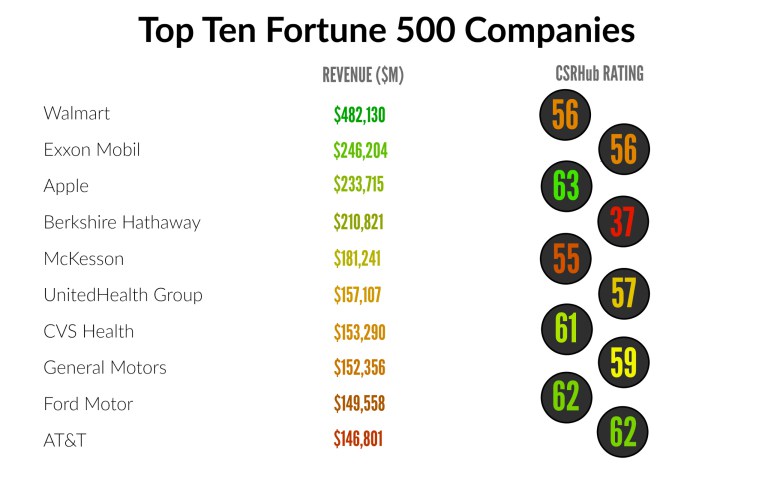Guest article by Vice President of Editorial Content, Kelly Seiz of Skytop Strategies
As previously published on Skytop Strategies
It is well documented that CSR practices are both an emerging and rapidly expanding set of standards for 21st century corporations. As $30 to $40 trillion shifts hands from the current generation to the upcoming millennials over the next few decades, there are markedly different standards that companies must uphold to gain traction in the evolving investor and consumer market.
A recent study finds that 69% of high-net millennials place greater worth in putting their money toward companies that show a high level of corporate social responsibility (CSR), even if they might sacrifice their return for the greater good. As a result of this growing trend, there is a greater variety in the options available—the number of SRI funds that apply a high level of CSR have exploded in one year from 200 in 2013 to over 900 in 2014 alone—over a 300% increase.
While Fortune 500 companies are ranked by their annual revenue, Skytop Strategies analyzed their CSR ratings using CSRHub to see how they measure up in terms of corporate social responsibility.
The companies listed on CSRHub are rated using a database of socially responsible investing research firms, indexes, publications, ranking systems, NGOs, crowd sources and government agencies. Five hundred data sources’ elements are aggregated, mapped to 12 subcategories, normalized, and weighted by a patented algorithm, to give ratings for the four following categories and averaged out to give an overall CSR rating.
- The Community category covers the company’s commitment and effectiveness within the local, national and global community in which it does business, including products, human rights and supply chain, and giving back and philanthropy.
- The Employees category includes disclosure of policies, programs, and performance in diversity, labor relations and labor rights, compensation, benefits, and employee training, health and safety.
- The Environment category covers a company's interactions with the environment at large, including use of natural resources, energy and climate change, environmental policies and reporting, and a company’s impact on the Earth’s ecosystems.
- The Governance category covers disclosure of policies and procedures, board independence and diversity, executive compensation, attention to stakeholder concerns, and evaluation of a company’s culture of ethical leadership and compliance.
We evaluated the highest and lowest rating companies by their overall CSR score and delved into the ratings to discover why they ranked as the best and worst when it comes to corporate social responsibility.

Nationwide Financial Services Inc. ranked highest in both the Community and Environmental categories. The company has a long history in community engagement practices, including over 60 years of partnership with The American Red Cross and the Columbus Children’s Hospital. Their employees donate a total of nearly 16,000 units of blood annually, and Nationwide Financial Services provided a $100,000 Donation to Red Cross Annual Disaster Giving Program for Hurricane Matthew Relief. Nationwide has also partnered with Feeding America and donated 20 million meals over the course of 14 years.
In shareholder relations, ESG (environment, social, and corporate governance) and CSR efforts have proved to be valuable both in terms of brand value and company reputation. With over 33% growth in SRI investing over the past two years (SRI investing now accounts for more than $1 out of every $5 under professional management in the U.S.), corporate social, environmental and governance practices continue to gain relevance for investors and issuers alike.
New York Life Insurance Company ranked highest for Employees at 81 and Governance at 76. New York Life Insurance Company offers various educational programs for their employees, and is also well known for their inclusive policy toward employees of different backgrounds.

Dollar Tree Stores, Inc. holds the lowest Employee rating with 41, which falls in the bottom 9% in terms of the Fortune 500 Employee ranking. They have a record of 100 violations with OSHA, many of them repeat offenses. In 2015 Dollar Tree paid a total of $825,000 in fines for blocked emergency exits, and improper storage methods that were in danger of injuring employees.
Berkshire Hathaway Inc. holds the lowest overall CSR rating, despite being listed fourth on the Fortune 500. “Berkshire has extremely low CSR scores across all subcategories,” Cynthia Figge, COO and Co-founder of CSRHub says. “They have 45 data sources, including all 13 of our major ESG analyst source databases, so this provides a strong signal of their perceived performance.”
Fortune Global 500 firms spend over $15 billion a year on corporate philanthropy, and Spearhead a wide variety of social responsibility (CSR) initiatives. Forty-three percent of Fortune 500 companies have set renewable or sustainable energy targets, 22 of which have committed to powering all of their operations with renewable energy.
While Fortune 500 companies may maintain the highest total revenue, the varying CSR ratings of the top-ranking companies show that fiscal performance doesn’t necessarily factor in social and environmental value. Still, PwC’s 19th Annual Global CEO Survey showed that CEOs believe that over the next five years, the most successful organizations in their respective industries will incorporate both financial and non-financial matters in reporting, have investors seeking ethical investments, make corporate responsibility core to the company, and that top talent will prefer to work for organizations with social values aligned to their own.
Beyond the bottom line, socially responsible corporations may sacrifice higher revenue to maintain brand value and reputability, which, given the shift in investor preference, may lead us to see a very different Fortune 500 list in the coming years.
